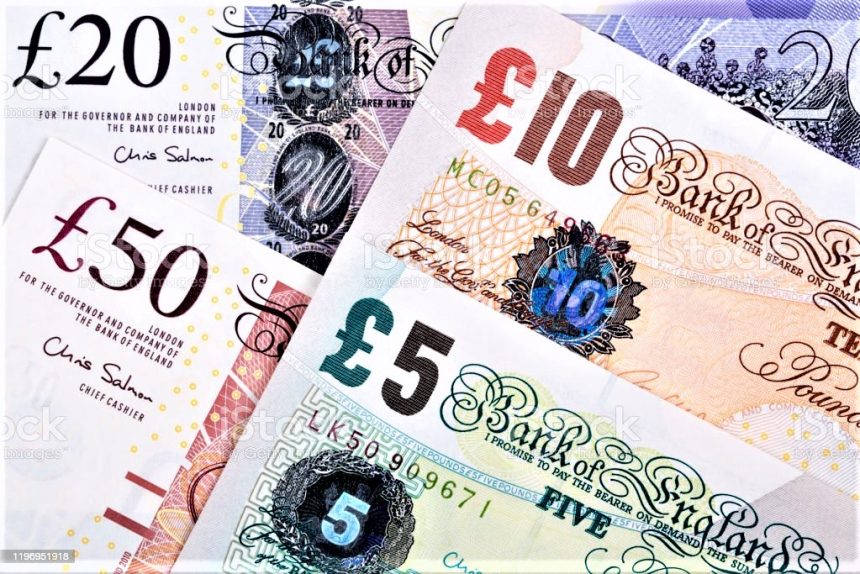Pound has given up its comeback amid a cautious market attitude.
Due to the aggressive risk-aversion theme. The Pound Sterling (GBP) is under intense selling pressure and will most likely retest a 10-week low. The GBPUSD pair is reeling from the Bank of England’s (BoE) aggressive interest rate hike strategy. Which is hurting the economy. Investors fear that if central banks fail. The global economy will enter a slump. Banks’ monetary policy is still tightening.
The UK economy is projected to remain fragile, since the Bank of England may be the last to pause. The policy tightening cycle. Britain’s Consumer Price Index (CPI) is the highest among G7 nations. Suggesting that additional rate rises are on the way. However, UK Finance Minister Jeremy Hunt told the public. That the administration is on course to reduce inflation to about 5% by the end of the year.
Market Movers: The pound falls as the US dollar returns to a 10-week high.
Pound Sterling is struggling to hold above the critical support level of 1.2600. As investors fear the UK economy will enter a recession. Knowing that the Bank of England (BoE) will hike interest rates further.
The Bank of England is not yet in a position toStop tightening policy. And declare triumph over continuing inflationary pressures.
Despite the fact that the Bank of England has already hiked interest rates to 5.25%. UK core inflation is approaching its all-time high of 7.1%. In reaction to lower energy and fuel prices. Headline inflation has slowed less.
Market participants anticipate that the Bank of England will hike interest rates again at its September meeting. This would be the central bank’s 15th consecutive interest rate hike, with rates projected to rise by 25 basis points (bps) to 5.50%.
The UK housing and manufacturing sectors have been under pressure as a result of the Bank of England’s increasing interest rates.
First-time home purchasers delayed their purchases. In order to avoid higher interest commitments. Firms reduce investment on new hires andIn order to focus. On functioning effectively in a declining demand situation. Inventories must be reduced.
UK Hunt stated that the administration is on pace to reduce inflation to less than 5% by the end of the year.
UK Finance Minister Jeremy Hunt stated over the weekend that the administration is on course to reduce inflation to about 5% by the end of the year.
The British government’s emphasis on halving inflation is anticipated to upset supporters of the ruling Conservative Party, who actively advocated for tax cuts before to elections.
According to a Barclays research on UK consumer expenditure, purchasing remained subdued in August, despite the regular public going to theaters to see the flicks Barbie and Oppenheimer.
According to the Barclays analysis, yearly growth in consumer spending on credit and debit cards has slowed to 2.8% from 4.0% in July.
Pound Investors will keep a watch on the in the future. August S&P Global Composite and Services PMI for the United Kingdom. Economic data is stable at 47.9 and 48.7, respectively. A value less than 50.0 indicates a decrease in activity. For the first time in six months, the UK economy’s service sector may shrink on a monthly basis.
Because of increased geopolitical fragmentation, investors expect higher interest rates from central banks in wealthy countries to be more difficult for developing markets.
Despite mounting anticipation of a halt in the Federal Reserve’s (Fed) policy tightening, the US Dollar Index (DXY) hits a new three-month high above 104.50.
According to the CME FedWatch Tool, there is a 60% possibility that interest rates will rise. On Wednesday, the film was released. The PMI is projected to remain stable at 52.
Pound Technical Outlook
After encountering selling pressure above the round-level resistance of 1.2600. The pound sterling has retreated. As market sentiment grows pessimistic, the Cable falls vertically.
The Inside candle chart pattern will be broken if the price falls below. The September 1 low of 1.2577.
The pound 20-day and 50-day Exponential Moving Averages (EMAs) have already crossed bearishly. The asset is falling toward the 200-day moving average. Which is trading below 1.2500.









